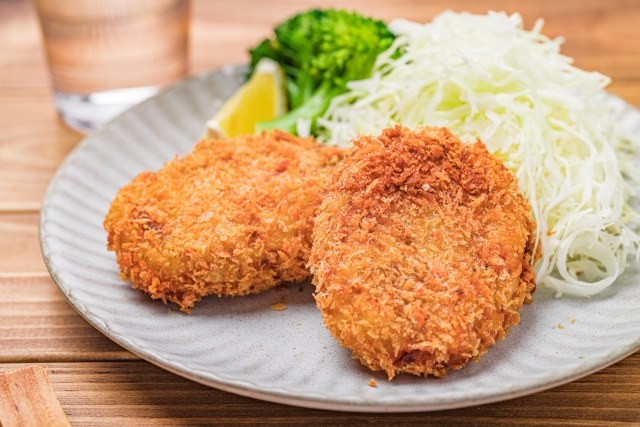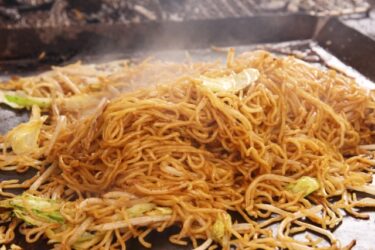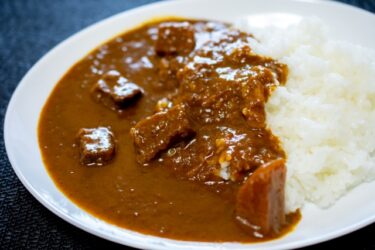Korokke (Croquette) is a dish in which boiled and crushed potatoes and cream sauce are mixed with minced meat and vegetables, rolled up, wrapped in clothing, and fried in cooking oil.
It was born 100 years ago, imitating the Western food “croquette”, and is one of the popular dishes in Japan.
Some have an oval shape and some have a bale shape. Not only can it be eaten with rice as a side dish, but it can also be sandwiched between breads, used as a topping for soup soba or curry rice, or eaten as a snack.
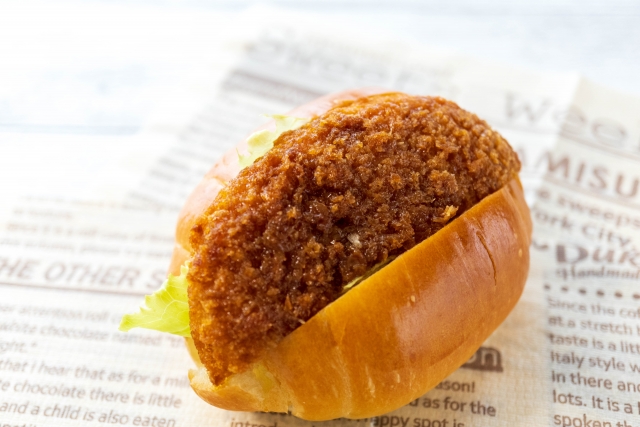
What is Korokke and can I eat it?
Materials of Korokke
Potatoes, wheat, beef, pork, and seasonings
As I will explain later, there are various types of korokke. Raw materials vary by type.
| Food supermarket | Convenience store |
There are many types and ways to eat Korokkes
There are many types of Korokkes. The most common one is crushed boiled potatoes mixed with a small amount of minced beef or pork and fat, shaped into an oval shape, and then put on the surface in the order of flour, beaten egg, and bread crumbs, and then fried in cooking oil.
This is called “potato Korokke”, but in Japan, the word “Korokke” simply means potato Korokke.
Korokke is a side dish for the common people. The price is cheap, and you can buy one at a food supermarket for about $ 0.4. It is often eaten with Worcestershire sauce.
Some frozen foods can be eaten simply by thawing in the microwave without frying. Also, they are often included in cheap lunch boxes.
Meat Korokkes contain more meat than potato Korokkes and are slightly more expensive. The meat used in meat Korokkes is beef or pork. It’s made and eaten in much the same way as potato Korokkes, and you can buy them at food supermarkets.
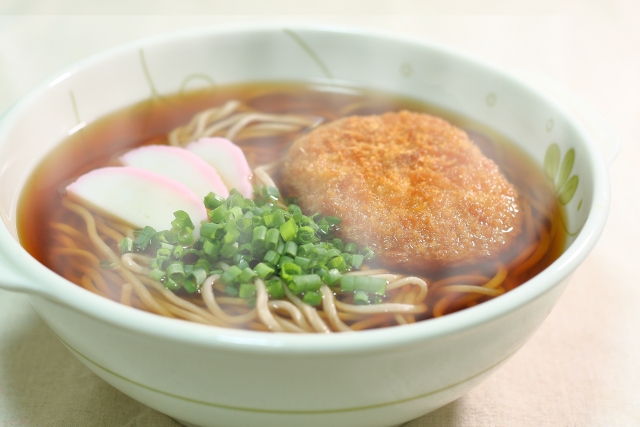
In addition to this, a new Korokke called cream Korokke has appeared.
This is made by mixing ingredients such as minced meat, shrimp, and crab in a cream sauce, adding flour, beaten egg, and bread crumbs to the surface in that order, and then fried in oil. The shape is also bale-shaped, and it is a completely different dish from potato Korokke and meat Korokke.
Cream Korokke don’t taste good when cooled, so cooked ones are rarely found in food supermarkets and convenience stores. It is sold as frozen food and is popular. Cream Korokkes are also on the menu of Western restaurants.
In addition, there are the following Korokkes. The cooking method of battering flour, beaten eggs, and bread crumbs and frying in vegetable oil is exactly the same as other Korokkes.
- Pumpkin Korokkes: Use crushed boiled pumpkin
- Tofu Korokkes: Use ingredients containing tofu
- Cheese Korokkes: Cheese in the ingredients
- Curry Korokkes: Uses ingredients seasoned with curry powder

Try to eat Korokke!
How much ?
Here, the cheapest potato Korokke is introduced.
- $ 1, as a hot snack of convenience stores
- $ 0.4, as a side dish sold at food supermarkets
Where can I eat Korokke ?
- Convenience stores
Most convenience stores have hot snacks next to the cashier. You can buy freshly fried croquettes. - Food supermarkets
There is always a croquette in the delicatessen section of the food supermarket. Usually, packs of 2 to 4 are sold.
Few restaurants serve potato croquettes. I sometimes see it in university cafeterias. If you order a croquette set meal at a restaurant, meat croquettes or cream croquettes will be served.
Precautions when eating Korokke
For gluten-free people
Wheat flour is used for the batter of Korokkes.
For Muslims
Even Korokkes made from plant ingredients, such as potato and pumpkin, may use pork fat. You had better not eat Korokkes.
Japanese writer’s comment for Korokke
If you like Japanese anime, you may know an anime work called “Kiteretsu Daihyakka”. This is an anime produced by Fujiko F. Fujio, who is also famous as the author of “Doraemon”.
The “cooking march” used as the opening song in this anime is about how to make Korokkes.
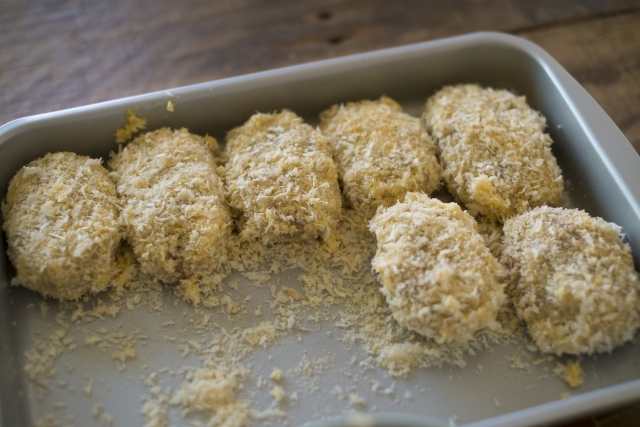
If you make it according to the lyrics of this song, it has a reputation for making delicious Korokkes, and many YouTubers u uploads videos. Korokke is so integrated into Japanese life that it appears in Japanese animation made in the 1990s.

